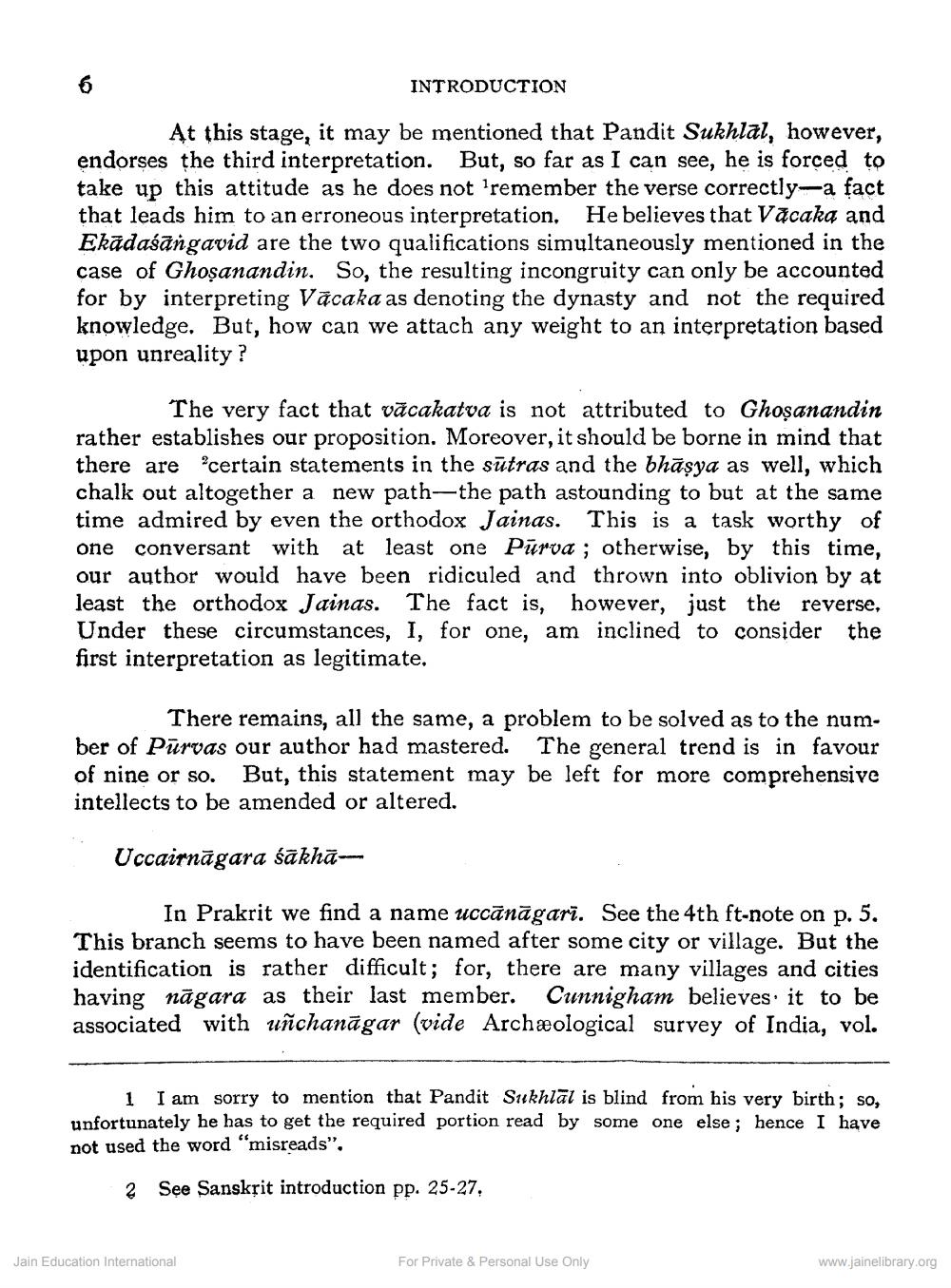________________
INTRODUCTION
At this stage, it may be mentioned that Pandit Sukhlal, however, endorses the third interpretation. But, so far as I can see, he is forced to take up this attitude as he does not remember the verse correctly-a fact that leads him to an erroneous interpretation. He believes that Văcaka and Ekādaśangavid are the two qualifications simultaneously mentioned in the case of Ghoşanandin. So, the resulting incongruity can only be accounted for by interpreting Văcaka as denoting the dynasty and not the required knowledge. But, how can we attach any weight to an interpretation based upon unreality?
The very fact that văcakatva is not attributed to Ghoşanandin rather establishes our proposition. Moreover, it should be borne in mind that there are certain statements in the sūtras and the bhāsya as well, which chalk out altogether a new path-the path astounding to but at the same time admired by even the orthodox Jainas. This is a task worthy of one conversant with at least one Pūrva ; otherwise, by this time, our author would have been ridiculed and thrown into oblivion by at least the orthodox Jainas. The fact is, however, just the reverse, Under these circumstances, I, for one, am inclined to consider the first interpretation as legitimate.
There remains, all the same, a problem to be solved as to the number of Purvas our author had mastered. The general trend is in favour of nine or so. But, this statement may be left for more comprehensive intellects to be amended or altered.
Uccairnāgara sākhā
In Prakrit we find a name uccānāgari. See the 4th ft-note on p. 5. This branch seems to have been named after some city or village. But the identification is rather difficult; for, there are many villages and cities having nāgara as their last member. Cunnigham believes it to be associated with uñchanāgar (vide Archæological survey of India, vol.
1 I am sorry to mention that Pandit Sukhlal is blind from his very birth; so, unfortunately he has to get the required portion read by some one else; hence I have not used the word “misreads".
2
See Sanskrit introduction pp. 25-27,
Jain Education International
For Private & Personal Use Only
www.jainelibrary.org




